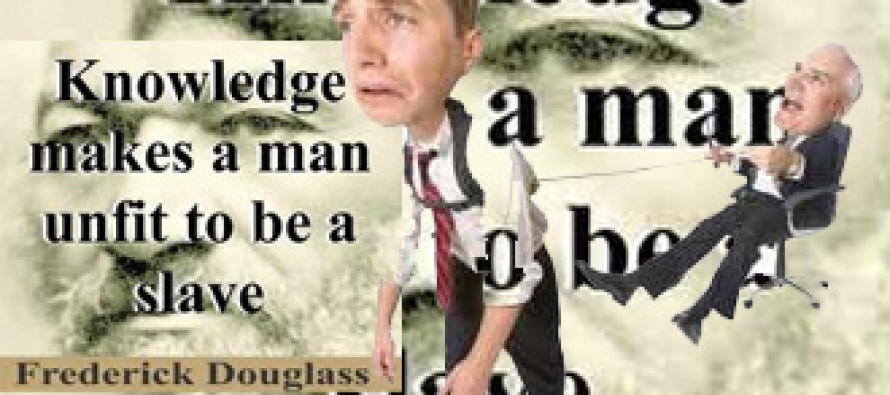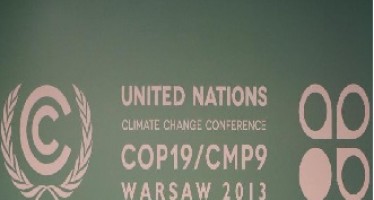21st Century “Kunta Kinte”! Chapter 9: Epilogue (Final Chapter)

21st Century “Kunta Kinte”!
Introduction: Revealing the “untold”! | Chapter 1: The realisation! | Chapter 2 : The beginning! | Chapter 3: The dream! | Chapter 4: The flash Back (part one) | Chapter 5: The flash back! (part two) | Chapter 6: Back to reality! | Chapter 7: Turning point! | Chapter 8: Life Goes on…
Chapter 9: Epilogue (Final Chapter)
I was overwhelmed by the comments I have received over last four weeks from my reader’s about ending this series. Comments came from all over the world. It has been an interesting journey for me to receive so many comments and I have to agree not all of them were ‘positive’ or ‘supportive to the conspiracy theory’. But majority of the readers did find some similarities with their own migrant life, struggle, hopes and dreams!
A lot of my local readers from Canberra just got excited about us being arrived in Canberra and they wanted to share my experiences in Canberra the same way I shared my experiences in Melbourne with them. Some of them were genuinely disappointed!
Yes, I certainly would like to share my experiences in Canberra with my readers one day! Yes, Canberra was again a mix feeling about good, silly and awesome times with great (and not that great) people.
I am sorry, you just have to wait, until I bring this writing up to a ‘minimum standard’ so that some publisher is kind enough to publish it as a book. I would like to share my true feelings as a first generation migrant with much wider audiences.
Yes, Priyo Australia is the beginning of my journey! It worked as a great platform for launching my ‘conspiracy theory’ on immigration policy of developed countries. Thanks to the editor of Priyo Australia for allowing me to publish 21st Century “Kunta Kinte”!
I can assure you all, by the time I am ready to publish this as a book, it would have a chapter on my experiences in Canberra not only as an international migrant but also as a domestic migrant from Melbourne!
However, I have mentioned in my August chapter that this series is going to end in September 2012. As we all know, this ‘story’ has no ending yet as we are still in it, we are still living and breathing Australian air, we are still ‘trapped’ in our life in a developed world!
Probably the dimension of the ‘trap’ has changed between 1989 and 2012!
In this last episode towards the end of this series, I would like to highlight few events happened in Australia which raised genuine questions about our immigration policy and its impact.
Few years back, reflecting the unfortunate event with Dr Hanif and after listening to some comments at a conference of the Federation of Ethnic Community Councils of Australia (FECCA), it was much clearer to me that majority of the skilled migrants are the ‘Knowledge Slaves’ of Australia.
This reflection of my true experiences helped me to unveil a new dimension of human conspiracy ever implemented by mankind – to create ‘knowledge slaves’.
It took more than 20 years for me to understand the deep meaning of the ‘migration’ policy for the developed world.
I think it is time to raise this issue now in the 21st Century before it becomes worse in the coming centuries. Our next generation migrants need to know our feelings and also the traps that we have already stepped in. This is a warning for them and also an eye opener for future prospective migrants to the developed world.
However, this trend of migration to the developed world from the developing world has been continuing for years and I believe will continue in the future!
Some of my reader’s disagreed with my conspiracy theory and I respected that but we need a long term ‘win win’ solution for this.
Both the ‘donor’ and ‘recipient’ governments can have an agreement so that both can get benefit out of this migration process. It is a question of ‘give and take’. Most of the developing countries are over populated and most of the developed countries are in need for appropriate skilled human resources.
I asked few questions on Chapter 3 in relation to these types of issues, I just wanted to repeat those questions from my own experience.
Question one: why do I have to show my Australia citizenship certificate and/or write the number on my citizenship certificate when dealing with any official activities (including job interviews) with Australian Government?
Why don’t they accept my Australian Passport to prove my citizenship as an alternative?
Unfortunately, though the passport is a document superseded the citizenship certificate, still is not counted as an equivalent document like the citizenship certificate. I know it is an optional thing to have a passport but, my point is that if you have one, you should have the opportunity to use it as an alternative. Otherwise, like my daughter, who came to this country with us when she was 40 days old, need to carry the citizenship certificate for rest of her life!
Why would someone still differentiate between me, and people who were born in this country with a ‘man-made fence’ of a certificate which was given to me 23 years ago! While I have, Australian passport, tax file number, employment track record to demonstrate my loyalty to this country?
I believe this a policy to identify the ‘slaves’ upfront!
Question two: Do you know that after 30-40 years of service, can you take bulk of your superannuation savings out of this country to invest anywhere in the world including Bangladesh? Unfortunately you can’t!
However, Australia presently has 27 international social security agreements, with several more under negotiation. These agreements are bilateral treaties which close gaps in social security coverage for people who migrate between countries. They do this by overcoming barriers to pension payment in the domestic legislation, such as requirements on:
• citizenship
• minimum contributions record
• past residence record
• current country of residence
Australia’s agreements with Austria, Belgium, Chile, Croatia, the Czech Republic, Finland, Germany, Greece, Ireland, Japan, Korea, the former Yugoslav Republic of Macedonia, Netherlands, Norway, Poland, Portugal, the Slovak Republic, Switzerland and the USA also include provisions which regulate the Superannuation Guarantee contributions and contributions to partners’ countries social security systems for non-resident workers to avoid double-coverage.
Generally, Agreements allow Australian residents to maximise their income by helping them to claim payments from other countries where they have spent part of their working life.
All these agreements are based on the concept of shared responsibility!
Shared responsibility agreements are reciprocal. Partner countries under each agreement make concessions against their social security qualification rules so that people covered by the agreement may access payments for which they might otherwise fail to qualify.
In this way, responsibility for social security is shared between the countries where a person has lived during their working years and the person is able to unlock potential entitlements.
Generally, a pension from one country can be accessed in the second country, although the paying country maintains some discretion in the currency and delivery mechanisms used.
Under these agreements, Australia equates social insurance periods/residence in those countries with periods of Australian residence in order to meet the minimum qualifying periods for Australian pensions.
The other countries generally count periods of Australian working life residence as periods of social insurance in order to meet their minimum qualifying periods for payment.
Usually, each country will pay a part pension to a person who has lived in both countries.
Why can’t we influence Australian and Bangladesh Governments to establish similar arrangements so that Bangladeshi migrants can take similar advantages like the other 27 countries?
Why can’t we push such agreement a little bit more to force policy makers to think outside the square?
We all know that the ‘world of migrant’ in Australia has changed! It is obvious; we need to adopt a different approach to reduce the feeling of ‘slavery’ among some of us. We need to have a better understanding of the chronological development of Australian policies to support migration. We need to propose the right policy at the right time at the right place and to the right people and policy makers.
I believe now is the time!
The rapid change in diversification of Australian community is constantly demanding to clarify our understanding of any segment of the migrant community on a regular basis. More than 47% of Australian population has at least one parent born overseas. The changes in demographics, economy, climate, technological development, immigration policies, global politics has obvious influence on Australian communities. We need to rethink the way we involve migrants in various aspects to establish social capital, trust and confidence in each other. It demands a dynamic framework and a more pro-active community engagement.
Australia, among all other developed countries, has come a long way from the “White Australia Policy” to adopt policies to support multiculturalism. Multiculturalism has been Australian Government policy since the early 1980s, and it was formalised in 1989 in The National Agenda for a Multicultural Australia as part of the bicentennial celebration. The National Agenda for a Multicultural Australia defines multicultural as a simple term to describe cultural and ethnic diversity of contemporary Australia. It also reinforces that we are, and will remain, a multicultural society.
As a positive progression from this multiculturalism and to complement the spirit of multiculturalism the Australian Government initiated the ‘Living in Harmony Initiative’ in 1999 coinciding with the United Nations International Day for Elimination of Racial Discrimination. The day is mainly targeted at primary-school aged children to demonstrate Australian Government’s commitment to promote community harmony and to address issues of racism in Australia.
Even after almost 20 years of positive campaign on community diversity, negative impacts of racism, we have failed to convince some segments of our community to understand the importance of living in harmony or the value of multiculturalism. But we certainly do not want to leave behind that legacy of hatrate, anger and misunderstanding among our future generations. The beauty and value of Australian society is in the existence of our faith in ‘multiculturalism’ and ‘living in harmony’. This is our strength as a united harmonious Australian community.
The launch of the Multicultural Policy and the Living in Harmony campaign had a ten years gap between them. Harmony Day will celebrate its 14th birthday in 2013 and as a natural progression of the policies to promote the value in diversity we need to move towards a more innovative direction which is capable of empowering average Australians to respect the diversity in our community, preserve the common values and work towards common goals.
“Multiculturalism” and “Harmony Day” was designed to empower the baby boomers, the first generation migrants, who still value the “long distance nationalistic feelings” and always want to pass that to the next generations of Australian children.
These children, who are Australian born and/or growing up in a much diversified social environment than their previous generations, have a different demand. They need the knowledge and capacity to engage with the wider communities including businesses and all levels of government to enhance social inclusion rather than debating on the impacts of diversification.
We need a new and appropriate direction to cope with these changing demands by constantly updating our policy directions and approaches, depending on the target community in need at any particular time of the Australian history. It is time to move forward keeping in mind that ‘harmony day’, ‘multicultural policy’ over last twenty years, established a strong “foundation” for Australian culture, Australian ways of life and essence for current Government’s policy priorities on social inclusion.
I believe, we are now mature enough to commence dialogues between the countries so that:
• migrants can go back to their country of origin after serving the developed country for a negotiated period of time (may be 10-15 years) with some sort of tax incentives to their savings and transfer of their assets;
• migrant/citizen can go back to their country of origin with entitled benefits from the pension funds (similar agreements signed between Australia and 27 other countries);
• develop countries may borrow the ‘intellectual capacity’ of prospective migrants by reimbursing the amount of money the developing country spent for the development of that person by negotiation; and
• the migration process is transparent and benefited for both the countries.
Finally, I am not against the process of migration as it is a natural process between the developed and developing world but it needs to be much more transparent and helpful for both the country of origin and country of destination so that people like me don’t have similar feeling of exploitation after 20 years of living in a ‘host country’.
And, hopefully,
• One day the Bangladeshi migrants will have the full advantages in relation to the international social security policy like the other 27 countries enjoying with Australia in 2012.
• One day, we migrants may not have to keep our ‘citizenship certificate’ to issue our death certificate!
• One day, developed world will realise their ‘selfish gain’ and complement developing countries for its ‘investment’ globally!
• One day, we migrants will call ourselves as ‘assets’ for our country rather than ‘slaves’ in another country!
I will finish 21st Century “Kunta Kinte” with the Australian National Anthem as we all know it starts with the words ‘Advance Australia fair’ but it is still kept us in the dark from the 16th, 17th and 18th lines of the Australian National Anthem. These lines talks about harmony, talks about inclusion, talks about sharing, talks about community engagement. Quote from the National Anthem,
“For those who have come across the seas
We have boundless plains to share
With courage let us all combine
To Advance Australia fair”
However, I will still continue writing my true experience as a ‘migrant’ to Australia to reflect the reasons for my feeling as a ‘knowledge slave’. I will push the agenda to have Bangladeshi migrant’s equal rights like the other 27 countries. I will continue sharing my feelings with my fellow migrants!
Hopefully someone will have the courage to publish it, one day!
Thank you for being with me over last 9 months.
Good luck to us all as the first generation migrants!
THE END.
Related Articles
দেশে প্রথমবারের মতো ৩ ইঞ্চি ফুটো করে এমআইসিএস পদ্ধতিতে হার্টের ডাবল ভাল্ব প্রতিস্থাপন
( Original Source : বিডি প্রতিদিন/ ওয়াসিফ) দেশে প্রথমবারের মতো মাত্র ২-৩ ইঞ্চি ফুটো করে MICS পদ্ধতিতে হার্টের ডাবল ভাল্ব প্রতিস্থাপন
Canberra Ramadan 2021 (1442H) Starts on Tuesday 13th April
Salamu Alaikum WRT, WBT (Peace be on you). The Canberra Mosque along with the Imams Council of the ACT announces
Warsaw Conference on Global Climate Change Bangladesh
The 19th United Nations Framework Convention on Climate Change (UNFCCC), otherwise known as Conference of Parties ( COP) has commenced






